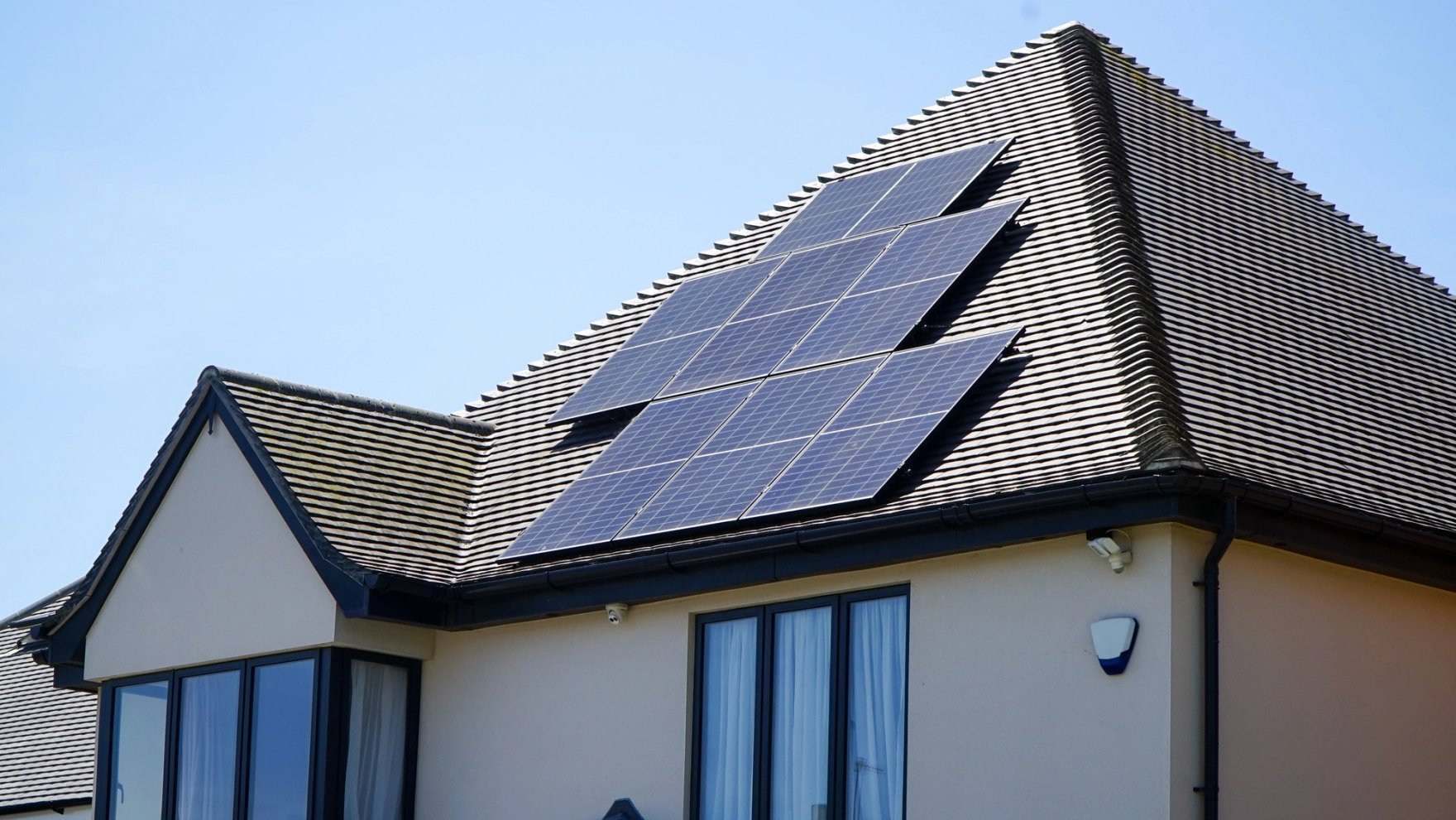
Disclaimer: This article is intended for informational purposes only. It is not intended as financial or tax advice. Consult a financial professional for individualized guidance on your eligibility for the Residential Clean Energy Tax Credit.
If you’ve considered installing solar panels but find yourself deterred by the cost of solar installation, the federal solar tax credit could help make renewable energy adoption more affordable. With rising energy costs and growing curiosity about renewable energy, the Residential Clean Energy Tax Credit offers a significant financial incentive for homeowners considering solar panels. Thanks to the Inflation Reduction Act (IRA), this tax credit is extended at 30% through 2032, making solar panel installation more affordable and accessible
Let’s take a look at how the solar tax credit works and how to qualify for it.
What is the Residential Clean Energy Tax Credit?
The Residential Clean Energy Tax Credit is a federal tax credit that enables homeowners to reduce what they owe in federal income taxes by a percentage of their solar installation costs. This credit can apply to:
- Solar panel installation
- Solar energy storage systems
- Installation costs associated with the above.
As of 2025, the tax credit is due to remain at 30% of eligible costs until 2032 when it will begin to gradually decrease.
How does the solar tax credit work?
When you install a qualifying solar energy system, you can claim 30% of the total cost as a credit against what you owe in federal taxes.
- Direct Savings: The tax credit reduces the amount you owe. For example, a $15,000 solar installation could yield a tax credit up to $4,500, reducing federal tax liability by that amount.
- Roll-over benefits: Tax credits greater than the amount owed in taxes in a given year can roll over to the following tax year.
Who qualifies for the 2025 solar tax credit?
To be eligible for the Residential Clean Energy Tax Credit in 2025, homeowners must meet several key requirements:
System Ownership: In order to qualify for the tax credit, you must own the solar system. If you lease your system through a third-party provider, the owner will receive the credit.
Installation Location: Qualifying systems must be installed at a primary or secondary residence in the United States.
Project Activation: To qualify, the system must have been installed and activated after 2017.
Battery Storage Eligibility: Beginning in 2023, standalone battery storage systems with a minimum capacity of 3 kilowatt-hours (kWh) also qualify. This also means if you previously installed solar and now want to add a battery system, those battery costs are now also eligible for the tax credit.
How much can be claimed with the federal tax credit?
While there is no limit on the amount you can claim with the federal solar tax credit, it is currently fixed at 30% and is only applicable to eligible expenses. These include:
- The cost of solar panels
- Battery storage systems 3 kWh in capacity or greater
- Installation costs, including labor, permitting, and inspections
- Electrical system upgrades related to solar installation
How much can be saved with the federal solar tax credit?
The tax credit under the Inflation Reduction Act is currently 30% of eligible costs and is due to continue at this percentage through 2032. The chart below breaks down the Federal Solar Tax Credit percentages between 2022 and 2035.
| 2022 | 2023 | 2024-2032 | 2033 | 2034 | 2035 | |
| Credit Before IRA | 26% | 22% | 0% | 0% | 0% | 0% |
| Credit Under IRA | 30% | 30% | 30% | 26% | 22% | 0% |
Not ready for solar panels yet? Consider community solar
Not ready to install your own system yet? Maybe you rent your home or have a rooftop that is not suitable for solar panels. Don’t worry, there’s another great cost-saving option available to you—community solar. With no upfront costs and no installation required, community solar is a great way to support clean energy and save on annual electricity costs. Learn more here.
Solar Tax Credit 2025 Recap
- If you're filing your taxes in 2025, the solar panel tax credit covers 30% of eligible costs associated with solar installation.
- The solar tax credit extends to new solar installations on your property after 2017.
- The federal tax credit for solar can reduce what you pay in income taxes.
- Community solar can be a great option if you aren’t ready to take advantage of the solar tax credit and install your own solar system.
Thanks to the Inflation Reduction Act’s extension of the solar tax credit, it is now easier than ever to see the return on upfront investment in solar panels. With the Inflation Reduction Act, solar panels become more accessible, and clean energy investments are incentivized, underscoring the vital role of solar in supporting a diverse and resilient energy grid. Solar is a renewable energy resource that can offer significant financial benefits, and with the solar tax credit, it is easier than ever to take advantage of this efficient, abundant energy source.